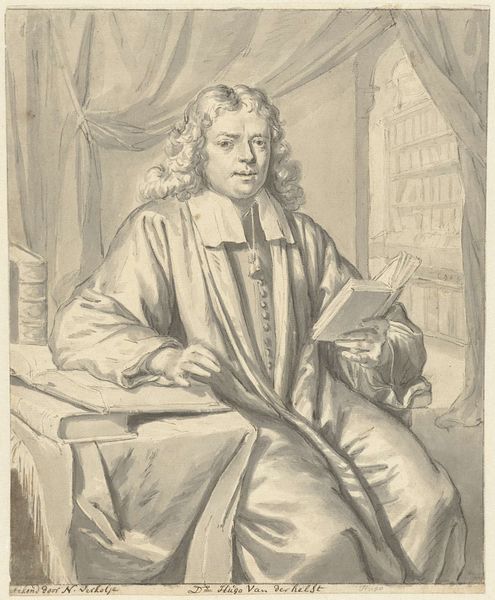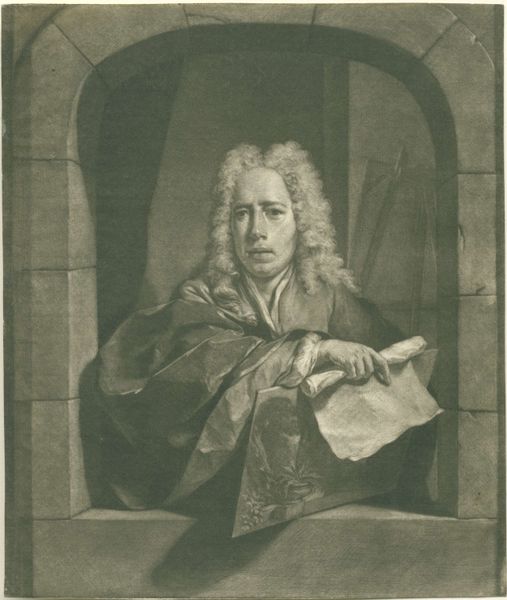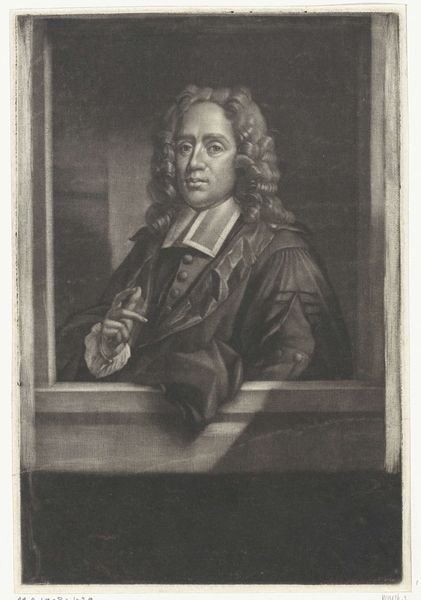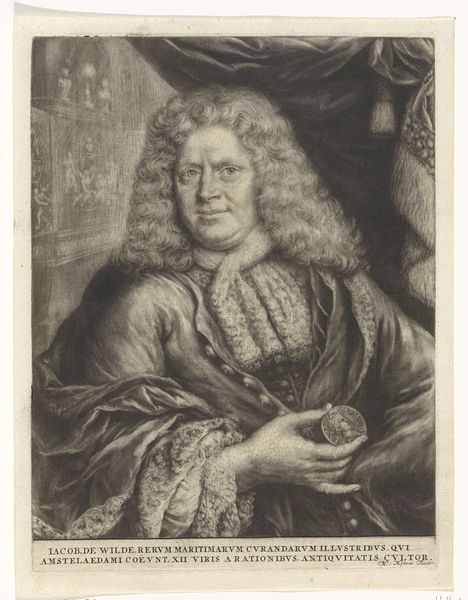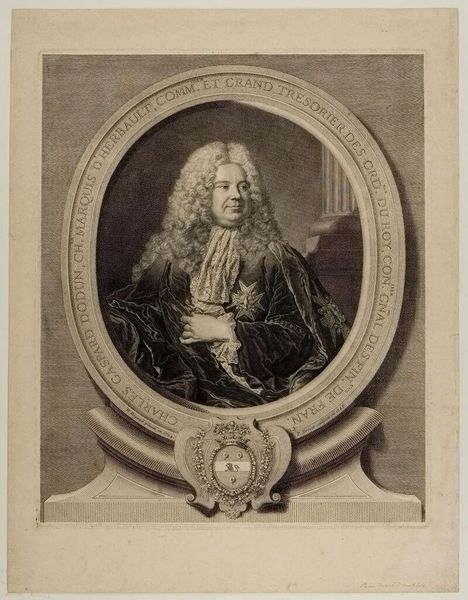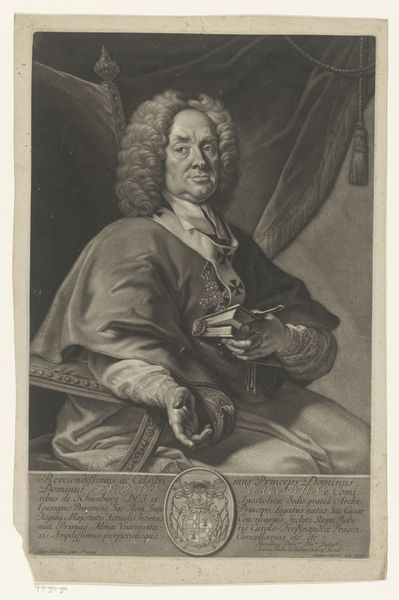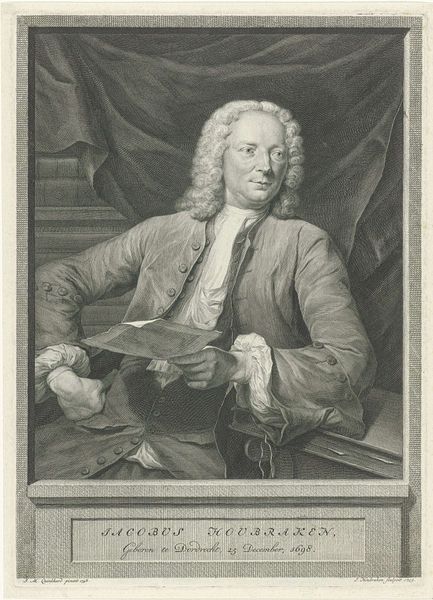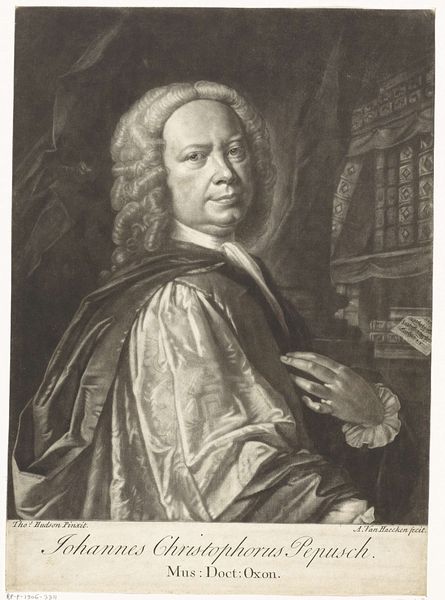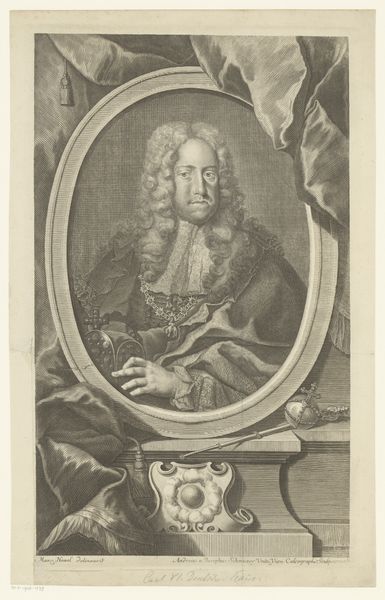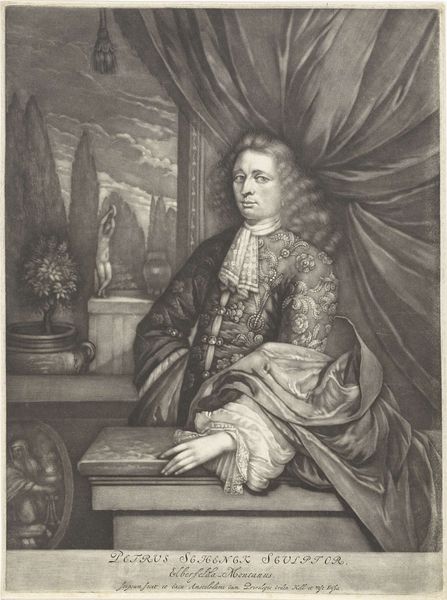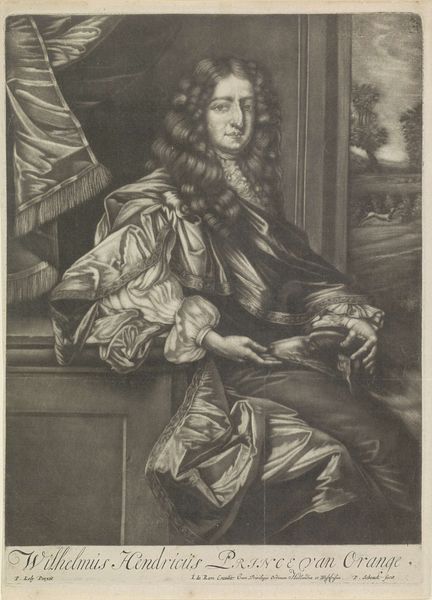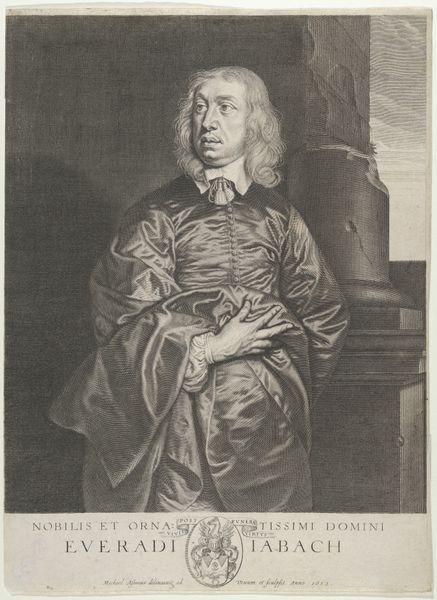
drawing, engraving
#
portrait
#
drawing
#
baroque
#
historical photography
#
engraving
#
realism
Dimensions: height 326 mm, width 224 mm
Copyright: Rijks Museum: Open Domain
Pieter van Bleeck created this mezzotint portrait of Richard van Bleeck sometime around 1723. Both artists were part of a Dutch family of painters active in the late 17th and early 18th centuries, when the Dutch Republic was a major center for artistic production and trade. Consider what it meant to depict an artist like this at the time. Richard van Bleeck is shown with the tools of his trade – brushes, palette, and maulstick – but also dressed in a robe and wig that mark him as a gentleman. The image thus promotes the status of the artist as someone of intellectual and social standing, rather than a mere craftsman. This reflects a broader shift in the art world at the time, as artists sought to gain recognition and respect from the public and from powerful institutions like the art academies. The image also shows a painting on the easel. Who is that a portrait of? And is this a comment on the role of the artists as being a 'copy' of the real thing? To understand the dynamics of the Dutch art world at this time, one can consult period writings, guild records, and the inventories of collections.
Comments
No comments
Be the first to comment and join the conversation on the ultimate creative platform.
